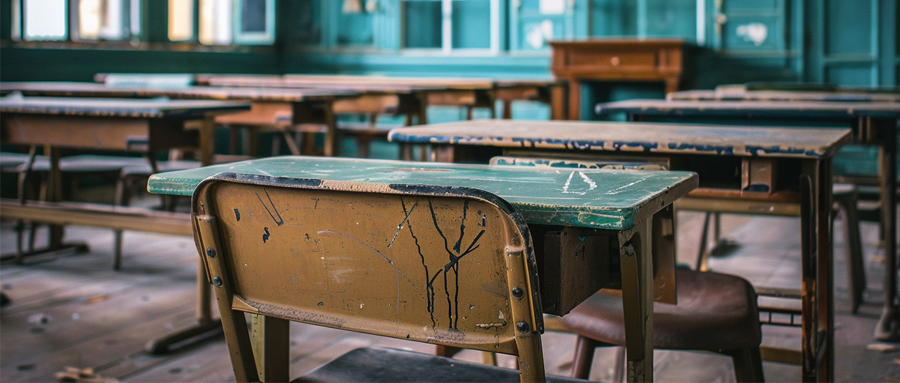
In today’s fast-paced world, the allure of cheap, readily available products is hard to resist. This trend extends beyond household goods and consumer electronics, infiltrating critical sectors like education. School furniture, an essential element of effective learning environments, is often subject to budget constraints and the temptation of low-cost solutions. However, the true cost of cheap school furniture goes beyond the initial price tag, impacting safety, durability, and sustainability. This blog delves into these hidden costs and explores why investing in quality, sustainable school furniture is crucial for our educational institutions.
One of the most alarming aspects of cheap school furniture is the potential safety hazards. Poorly constructed furniture can pose significant risks to students. According to the U.S. Consumer Product Safety Commission, thousands of children are injured each year due to furniture-related accidents, many of which could be prevented with better-quality products.
Cheap furniture is often made with substandard materials and shoddy construction techniques. This results in items that are prone to tipping, breaking, or collapsing under minimal stress. In a school setting, where furniture endures heavy use, this can lead to frequent accidents and injuries. For instance, unstable desks and chairs can tip over easily, posing a risk of serious injury to students.
Another safety concern is the use of toxic materials in the manufacturing of cheap furniture. Many low-cost products contain harmful chemicals such as formaldehyde, lead, and phthalates, which can off-gas into the classroom environment. Prolonged exposure to these chemicals can have adverse health effects on students, including respiratory problems, allergic reactions, and even developmental issues.
While cheap furniture might seem like a cost-effective choice initially, its lack of durability often leads to frequent replacements, adding up to a higher total cost over time. Schools that opt for low-cost furniture often find themselves in a cycle of continuous repairs and replacements, which can strain already tight budgets.
Cheap school furniture is not built to withstand the daily wear and tear of an active classroom. Desks, chairs, and storage units made from flimsy materials quickly show signs of wear, such as scratches, dents, and structural damage. This not only affects the aesthetic appeal of the classroom but also compromises the functionality of the furniture.
The need for frequent replacements means that the initial savings from purchasing cheap furniture are quickly eroded by ongoing maintenance and replacement costs. Investing in high-quality furniture, on the other hand, ensures longevity and reduces the need for frequent expenditures, ultimately proving more cost-effective in the long run.
The physical environment of a classroom plays a significant role in student learning and engagement. Poor-quality furniture can negatively impact the overall learning experience, affecting everything from student concentration to classroom aesthetics.
Cheap furniture often lacks ergonomic design, leading to discomfort and poor posture among students. Uncomfortable seating can distract students, reducing their ability to focus and participate actively in lessons. Ergonomically designed furniture, however, supports proper posture and comfort, enhancing student concentration and productivity.
The appearance and functionality of classroom furniture also influence the learning environment. Well-designed, aesthetically pleasing furniture creates a welcoming and stimulating atmosphere that encourages learning. In contrast, unattractive and dysfunctional furniture can make the classroom feel uninspiring and hinder the smooth conduct of educational activities.
Beyond safety and durability, the sustainability of school furniture is a critical factor that is often overlooked. The production of cheap furniture has significant environmental and ethical implications, contributing to deforestation, pollution, and poor labor practices.
Cheap furniture is typically made from non-renewable materials, such as particleboard and plastic, which have a high environmental footprint. The production process often involves the release of harmful pollutants and significant energy consumption. Furthermore, the short lifespan of cheap furniture means that it frequently ends up in landfills, contributing to waste and environmental degradation.
The manufacturing of low-cost furniture often involves exploitative labor practices in countries with lax labor laws. Workers, including children, may be subjected to unsafe working conditions and unfair wages. By choosing cheap furniture, consumers inadvertently support these unethical practices.
Given the myriad issues associated with cheap school furniture, it is clear that investing in high-quality, sustainable furniture is the better choice for educational institutions. Quality furniture offers numerous benefits that extend beyond cost savings, contributing to a safer, more engaging, and environmentally responsible learning environment.
High-quality school furniture is built to rigorous safety standards, using durable materials and superior construction techniques. This ensures that the furniture can withstand the demands of a busy classroom, reducing the risk of accidents and the need for frequent replacements.
Investing in well-designed, ergonomic furniture enhances student comfort and concentration, leading to better academic performance. Additionally, aesthetically pleasing furniture creates an inviting and stimulating classroom atmosphere that fosters engagement and learning.
Choosing sustainable furniture supports environmental conservation and ethical labor practices. Many high-quality furniture manufacturers adhere to environmental standards and certifications, such as the Forest Stewardship Council (FSC), ensuring that the materials used are responsibly sourced and the production processes are environmentally friendly.
While the initial appeal of cheap school furniture is understandable, the long-term costs and implications far outweigh the short-term savings. Safety hazards, frequent replacements, negative impacts on the learning environment, and environmental and ethical concerns make cheap furniture a poor choice for educational institutions. By investing in high-quality, sustainable furniture, schools can provide a safe, engaging, and responsible learning environment for their students, ultimately supporting better educational outcomes and contributing to a more sustainable future.